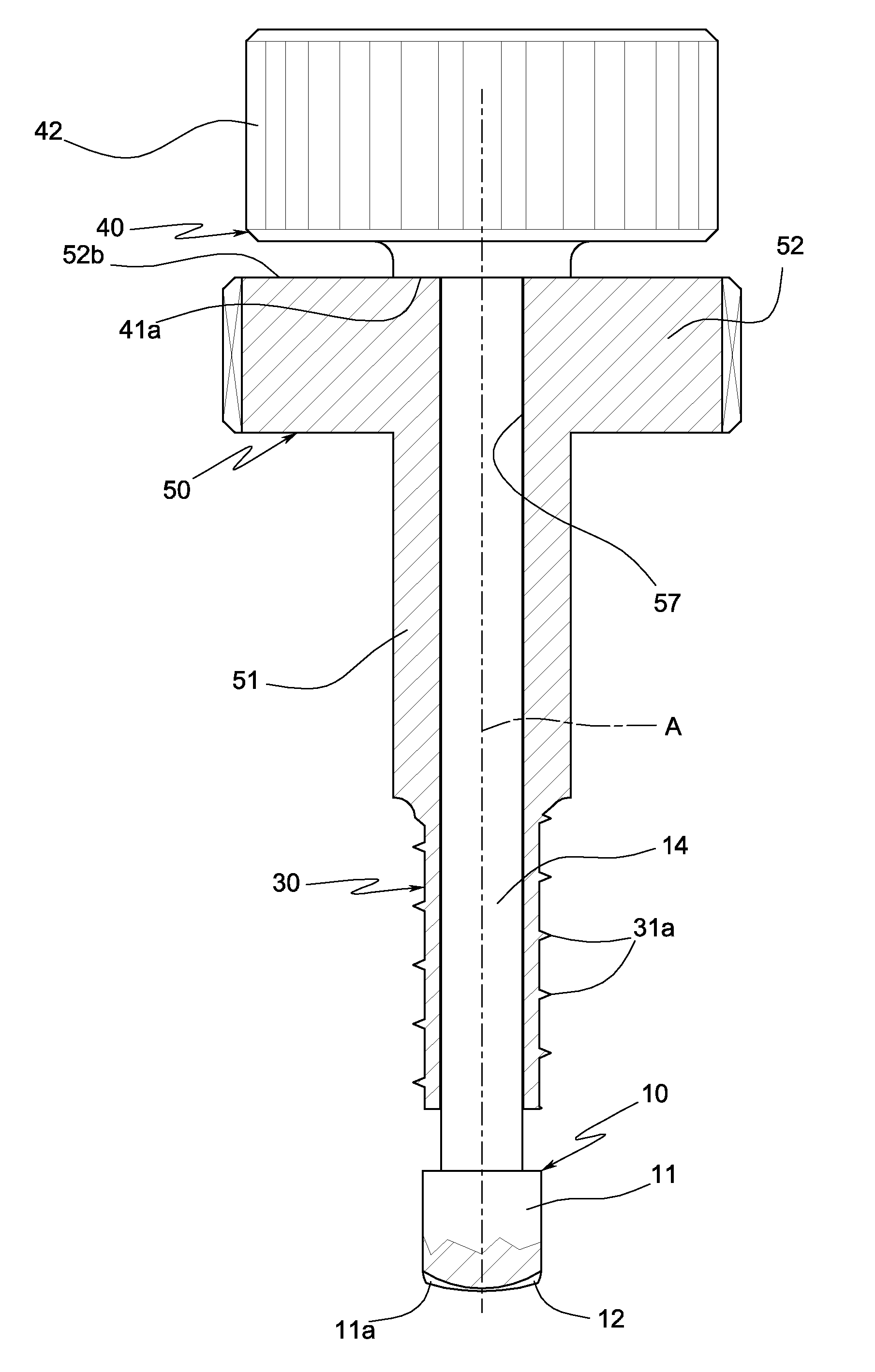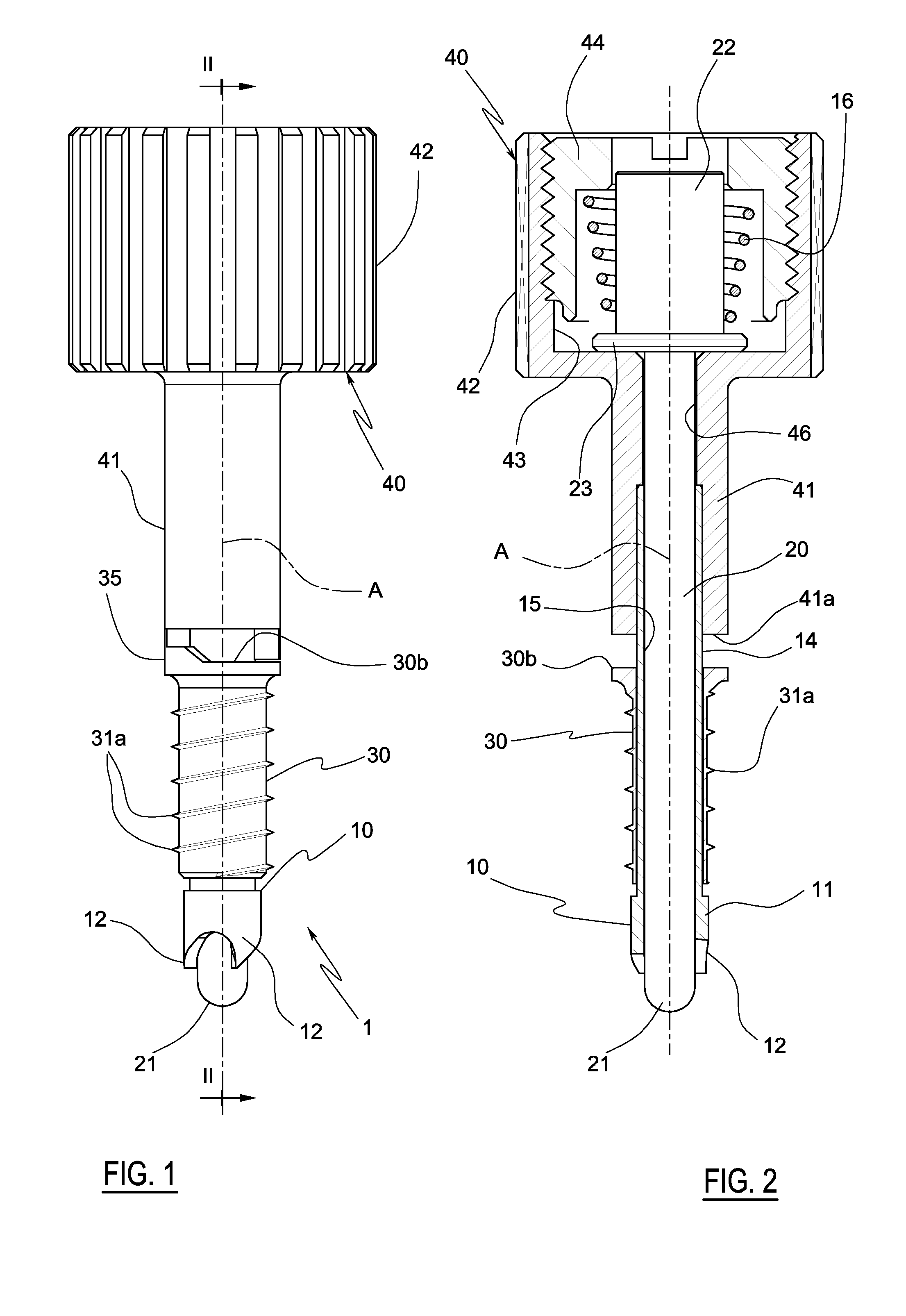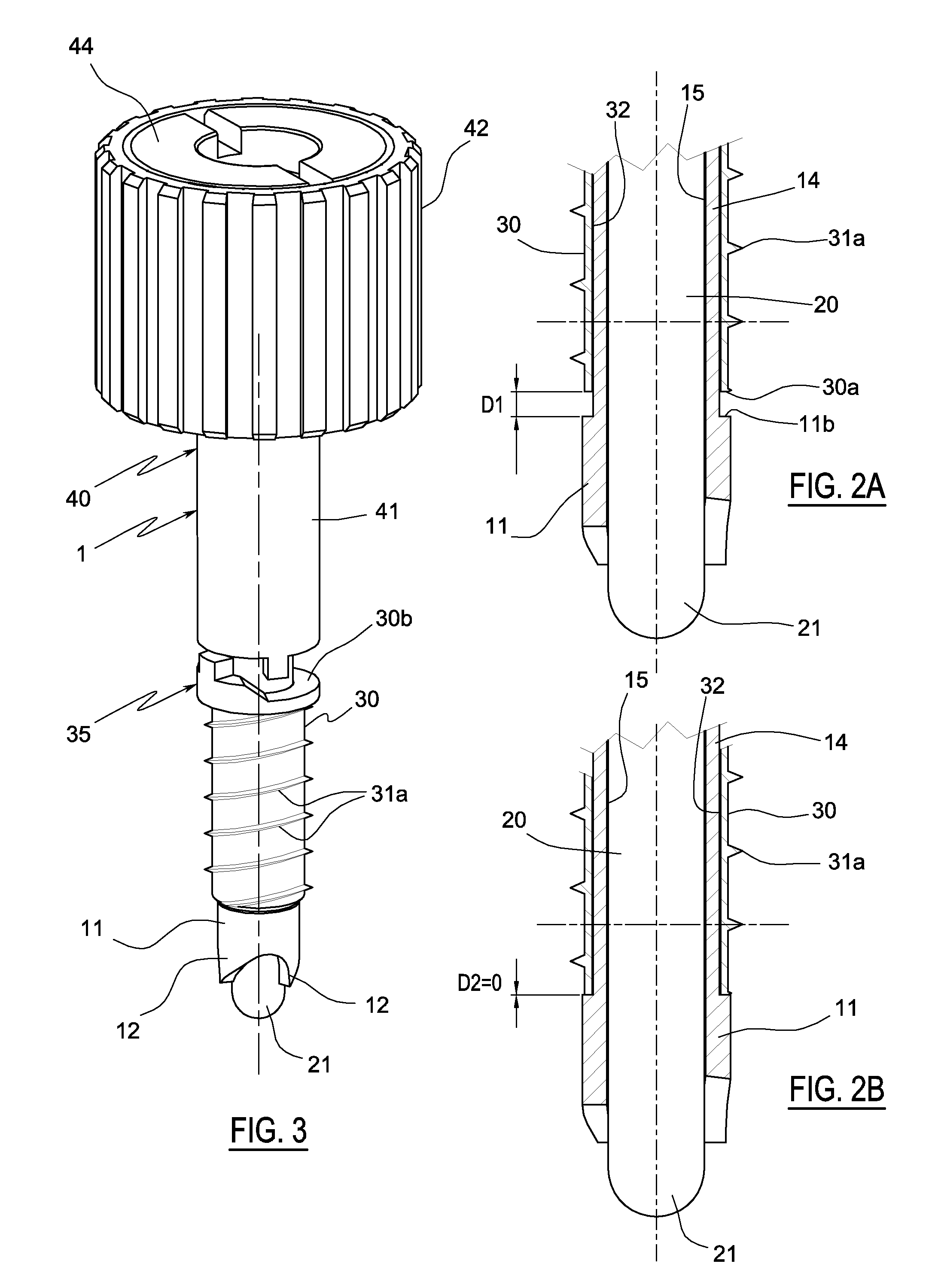Surgical bone milling instrument
a bone milling and instrument technology, applied in the field of surgical bone milling instruments, can solve the problems of limiting the height of bone and compromising the success of sinus cavity filling,
- Summary
- Abstract
- Description
- Claims
- Application Information
AI Technical Summary
Benefits of technology
Problems solved by technology
Method used
Image
Examples
second embodiment
[0064]This second embodiment differs from the first principally due to the fact that the drive element 40 rotates only the milling element 10 and not the tubular element 30 too; consequently the described profiled raised portions 35 and 45 are absent and the drive element 40 can rotate freely relative to the tubular element 30. The tubular element 30 is instead rotated by a dedicated second drive element 50, independent of the first drive element 40.
[0065]In particular the drive element 50 is located forward of the drive element 40 and is coaxially and solidly fixed to the rear end portion of the tubular element 30; the rod 14 of the milling element 10 passes through a matching axial through-hole 57 formed in the drive element 50.
[0066]The second drive element 50 comprises a tubular shank 51 fixed coaxially and solidly to the rear end portion of the tubular element 30 and a rear portion 52, of greater diameter relative to the shank 52, shaped as a circular handle that enables the op...
first embodiment
[0080]In the instrument, the rotation of the tubular element 30 is produced by manually rotating the drive element 40, which transmits, through the reciprocally engaging elements 35 and 45, a torque to the tubular element 30.
[0081]In the second embodiment of the instrument, the rotation of the tubular element 30 is produced by manually rotating the drive element 50, which drives only the element 30; the milling head 11 is not set in rotation.
[0082]In the second phase (milling phase), only the milling element 10 is rotated and it is moved axially forward relative to the tubular element 30 to excavate, in the axial direction, a cavity on the bottom of the hole 71 (see FIG. 6B).
[0083]If the raised milling ridges 12 have a limited radial extension, for example due to the presence of the hole 15 in the head 11 (FIGS. 1-8), the cavity that they create has the form of a peripheral circular groove 73 with a maximum axial depth of D (FIG. 6C), which develops along the circumference of the su...
PUM
 Login to View More
Login to View More Abstract
Description
Claims
Application Information
 Login to View More
Login to View More - R&D
- Intellectual Property
- Life Sciences
- Materials
- Tech Scout
- Unparalleled Data Quality
- Higher Quality Content
- 60% Fewer Hallucinations
Browse by: Latest US Patents, China's latest patents, Technical Efficacy Thesaurus, Application Domain, Technology Topic, Popular Technical Reports.
© 2025 PatSnap. All rights reserved.Legal|Privacy policy|Modern Slavery Act Transparency Statement|Sitemap|About US| Contact US: help@patsnap.com



